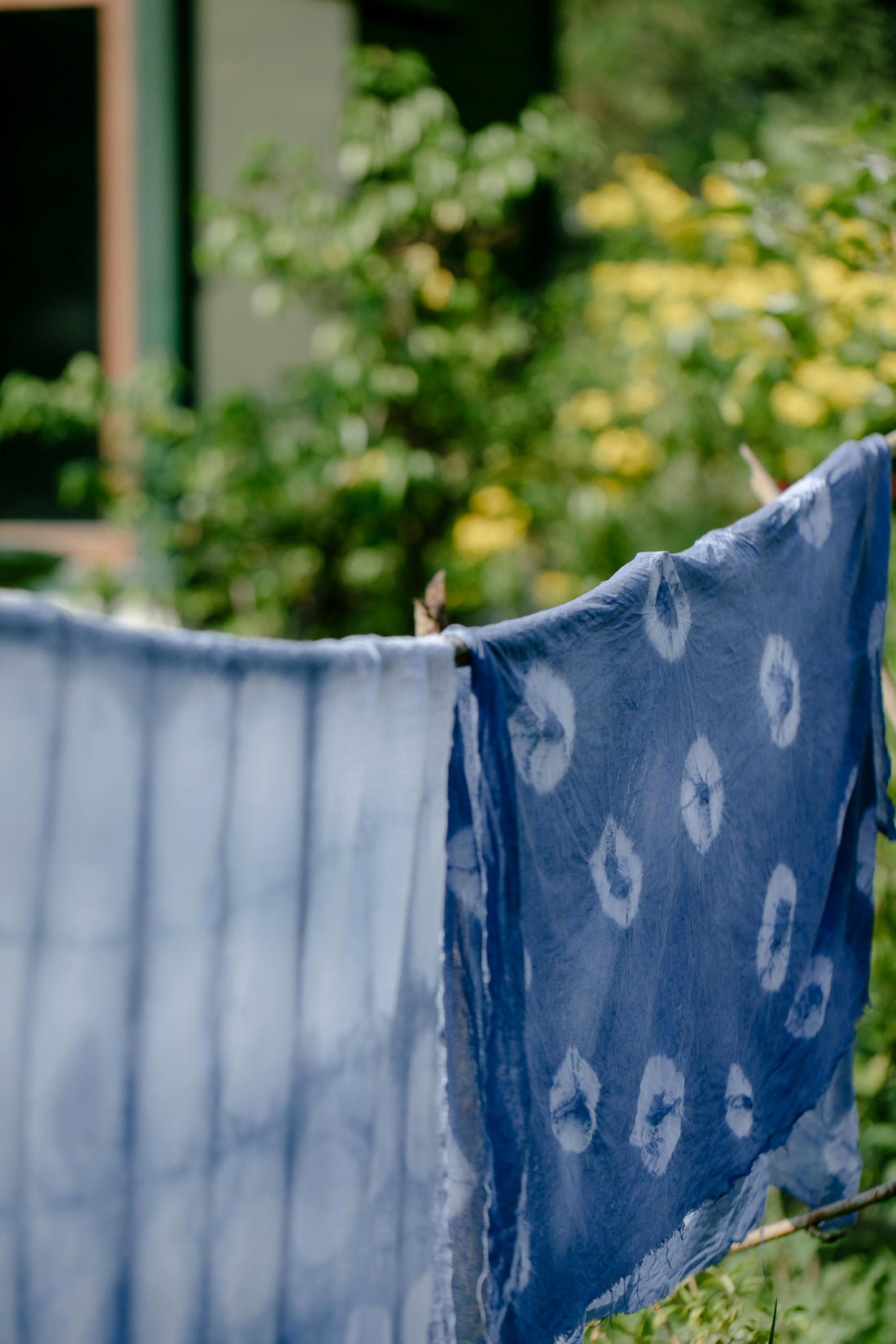
Adéọlá’s Àdìrẹ
Share
In the heart of Abeokuta, under the wide sky and whispering iroko trees, lived Adéọlá, a young girl with hands that danced like rivers and eyes that saw colors in the wind. She was the granddaughter of Mama Ṣadé, one of the last great Àdìrẹ artisans in their village.
Every morning, the sun would rise over pots of indigo dye bubbling like ancient secrets. Mama Ṣadé would sit on her low stool, carving patterns with raffia and cassava paste, humming songs older than memory.
"Àdìrẹ is not just cloth," she often told Adéọlá, "It is àlàyé meaning a story. Every dot, every swirl, every fold says something. Listen closely."
Adéọlá listened. She learned how to fold the cloth in sacred ways, how to press the cassava just right, and how to let the indigo breathe life into the fabric. Her fingers became fluent in symbols, ẹyọ, ibùkún, àyànbí which means signs of joy, blessing, and birth.
But the world outside was changing. Young people no longer wore Àdìrẹ. They wanted shiny clothes from faraway lands, forgetting the beauty woven into their own skin.
One market day, Adéọlá unveiled her first creation: a long Àdìrẹ gown, dyed in deep ocean blue, adorned with stars and birds in flight. It told the story of a young girl who refused to let her culture fade.
People stared. Then, they clapped.
That week, she sold out her entire batch. Orders came from Lagos, London, and even Los Angeles. Yet, every piece bore a hidden message: "Ẹ jẹ́ ká rántí meaning let us remember."
And so, through her hands and her cloth, Adéọlá reminded the world that Àdìrẹ was not just fashion, it was memory, identity, and magic stitched in dye.
